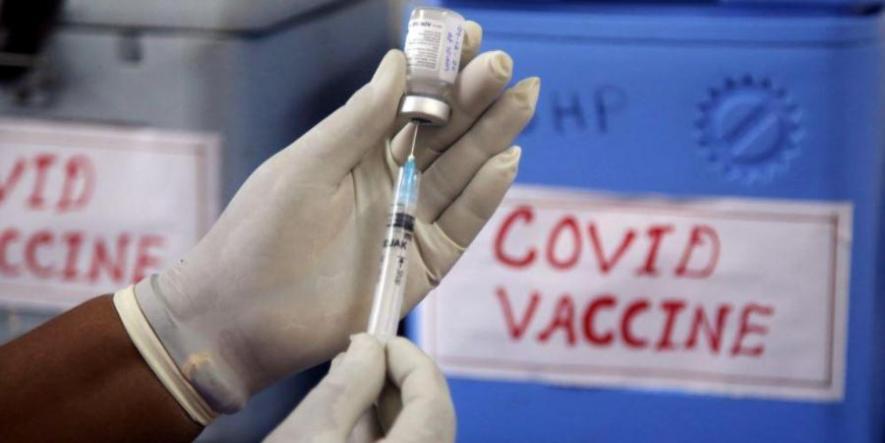Inhalable COVID-19 Vaccine Administration Begins in China

Representational Image. Image Courtesy: PTI
In an unprecedented move, China has started administering a vaccine against COVID-19 in the inhalable form. The vaccine in the inhalable form is sucked in through the mouth. It is offered as a booster dose to those who have been previously vaccinated.
This needle-free vaccine, according to the experts, can make vaccination more accessible in countries where the healthcare system is not so robust because the new kind of vaccine is easy to administer. Moreover, for those who fear a needle piercing their arm, the inhalable vaccine can be a better alternative.
China still has some pandemic restrictions, and before fully relaxing them the Chinese government wants more and more people to get the booster dose. Notably, 90% of the Chinese had been fully vaccinated while 57% of them received a booster dose.
In getting the booster dose of the vaccine, people had to put the nozzle of a translucent white cup into their mouth and then inhale it. They had to hold their breath for five seconds, and the entire procedure takes only 20 seconds to be completed.
In a statement made by a Shanghai resident, which has become famous, the person expressed the experience by saying, “It was like drinking a cup of milk tea. When I breathed it in, it tasted a bit sweet.”
Cansion Biopharmaceutical company CanSino Biologics Inc. was the one that developed the inhalable COVID vaccine. In fact, the company has made its earlier one-shot adenovirus vaccine in an aerosol form, which is the inhalable form. The adenovirus is a harmless cold virus, and it is used as a vector (vehicle) to administer a part of the SARS-CoV-2 virus (the pandemic virus that causes COVID-19) into the body.
The basic idea of a vaccine is to put a part or whole (inactivated/attenuated) of a pathogen (a disease-causing agent such as a virus) into the body. Receiving a foreign object in the form of a pathogen, the immune system (our defence mechanism) elicits a response against it. The immune system remembers the pathogen and also how it was fought off. In future, when the pathogen makes an entry into our body, the immune system, better equipped with the vaccine, can fight it off easily.
In the case of the earlier adenovirus-based COVID vaccine made by CanSino, parts (proteins) of the SARS-CoV-2 virus were sent into the body taking adenovirus as a vehicle. Notably, CanSino’s one-shot adenovirus vaccine has been approved for use in several other countries outside China, which include Hungary, Pakistan, Malaysia, Argentina and Mexico.
According to experts, a vaccine in the form of mist as it was in CanSino’s inhalable vaccine, can fend off the virus before it can even reach other organs of the respiratory system. However, this depends on the size of the droplets. The larger droplets, as explained by immunologist Vineeta Bal to the Associated Press, would train the immune system for better defence in the mouth and throat while the smaller ones would travel further into the body.
Speaking to Reuters, the chief medical officer at Shanghai United Family Hospital Pudong explained what the experts expect from the inhalable vaccine, “Our body’s first line of defence is the mucus membrane of our respiratory system, we want that to be directly stimulated to improve immunity and using the inhaled vaccine does that.” Zhao’s hospital has also administered the new inhalable vaccine along with regular injection shots of other vaccines.
Another health expert, Erwin Loh, the chief medical officer at St Vincents Health Australia opined that the inhalable vaccine is important not only because of its proficiency in protection, but also it can reduce vaccine hesitancy. “There is a large proportion of people who are resistant to taking the vaccine because they have a needle phobia. They may not articulate it, but that's what is in their mind,” Loh said.
Get the latest reports & analysis with people's perspective on Protests, movements & deep analytical videos, discussions of the current affairs in your Telegram app. Subscribe to NewsClick's Telegram channel & get Real-Time updates on stories, as they get published on our website.














